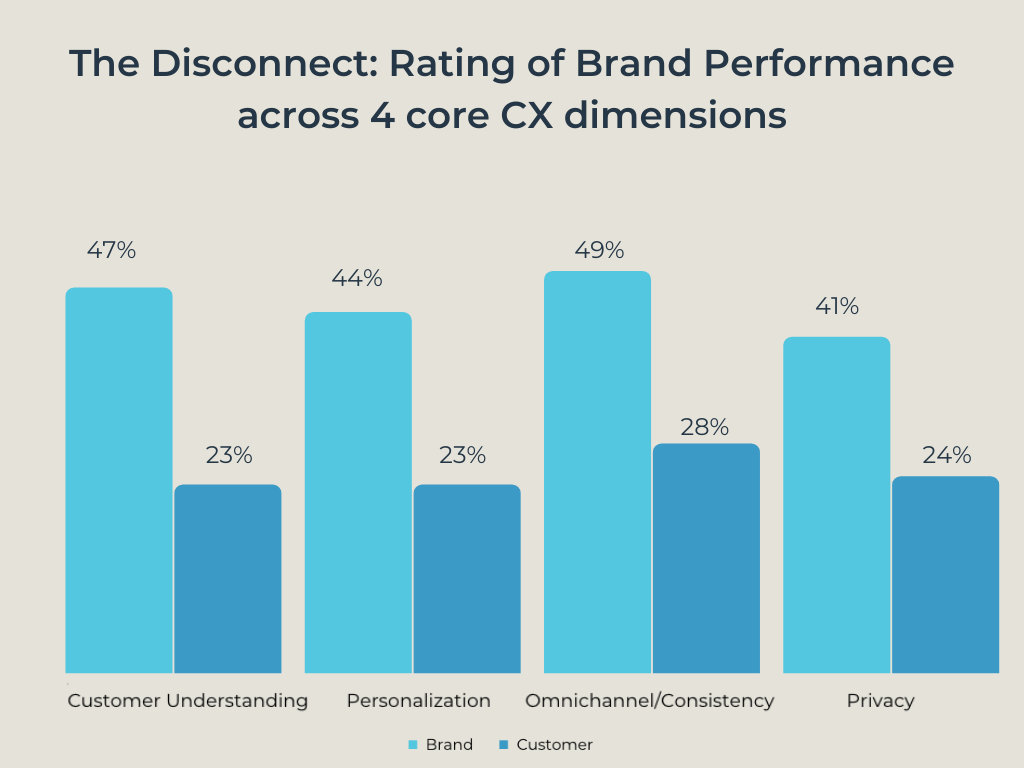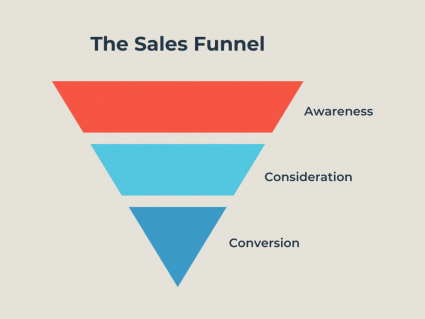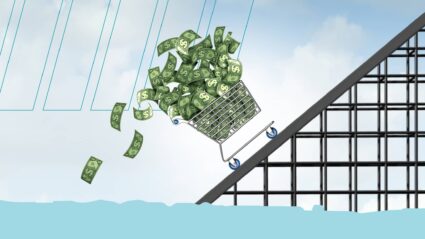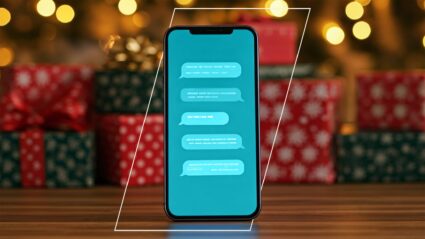The marketer’s prime directive has always been to strike the balance between short-term opportunity and long-term sustainable growth. But it’s not always easy to keep pace with both changing consumer behavior and evolving expectations for marketing performance.
In the past, there were only so many ways to reach the consumer. Now people are interacting with your brand across many channels, from TikTok videos to Google search results to your site chatbox to a print ad, and they expect that experience to feel seamless.
Even as marketers start to consider the complexities of a multi-channel customer journey, the old school mold of the sales funnel is often the foundation of both strategic decision-making and measurement in marketing. But the modern customer experience is a multi-touchpoint journey that doesn’t necessarily fit the mold.
Our experts teamed up with Google and the University of Michigan Ross School of business to explore how today’s marketers can reconcile the holistic journey and the objective-focused funnel to maximize the potential business impact of media planning and marketing strategy.
The disconnect: when the funnel fails to optimize for the full customer journey
When it comes to the customer experience, brands think they are way more successful across several core dimensions than consumers do, including customer understanding, personalization, omnichannel/consistency, and privacy.
In fact, according to the Harris Poll, 51% of marketers believe that brands are capable of delivering an excellent customer experience, while only 26% of consumers agree.

Source: The Harris Poll
All four of the customer experience core dimensions directly correlate to the complex, multi-touchpoint customer journey, and the disconnect between brand and consumer evaluation of the customer experience illustrates some of the challenges associated with sales funnel-based strategy that marketers might not even be aware of.
- Customer understanding: when brands are only accounting for potential issues that affect the conversion point or purchase decision, they often overlook pain points or other opportunities to proactively support customers across the entire journey.
- Personalization: marketers often think about personalization through a product or sales lens, but consumers want personalization to result in more relevant information mapped to their interests, not just ever more insistent and targeted ads aggressively pushing them to buy.
- Omnichannel/consistency: Integrating marketing efforts across channels so you can deliver a seamless, cohesive experience is getting harder as walled gardens become the norm, but customers don’t see channels, just your brand. When they’re getting hit with ads across channels that are surfacing different messaging or offers that seem in conflict or featuring products they’ve already purchased, it makes them very aware they’re being marketed to (and not in a good way).
- Privacy: This factor is intimately connected to consistency across channels, since marketers often want to do the bare minimum (if that) to respect consumer privacy because they want to efficiently move people down the funnel and they’re accustomed to using third-party data to do it; if you’re considering the holistic customer journey across the lifetime of a potential customer instead of just a single conversion point, that math often changes because you’re invested in building a longer-term relationship.
Overindexing in direct response and hammering audiences with aggressive conversion-focused messaging without considering the bigger picture is no longer acceptable.
Consumer expectations for brands are only getting higher, and your business needs to be prepared. Start by connecting the dots of the customer experience across channels. According to a Chief Marketing Officer Council report, 87% of consumers find it frustrating when they need to repeat themselves in a new channel. Eliminating that friction will go a long way.

Source: The Harris Poll
Your marketing strategy should start by aligning your business goals with actual consumer behavior. The key to making sure this doesn’t get out of hand or overly complicated is rigorous audience segmentation based on cross-channel behavioral data.
That tendency toward complexity is one of the main reasons the customer journey hasn’t overtaken the sales funnel as the primary tool marketers use for everything from strategy to budget allocation to measurement.
The challenge: the customer journey vs. the sales funnel
The sales funnel illustrates a simple concept: at the top, you’re building brand awareness. Campaigns are working to get as many potential customers as possible familiar with your brand so they’re primed for the next phase: consideration.
The middle funnel is where you provide more information to people who are researching options for purchase and showing a higher intent to buy. If you’ve done a great job, those consumers get the information they need to make the right choice in the bottom of the funnel, at the conversion stage. Once they convert, you’ve accomplished your objective: turning a prospect into an actual customer.

Marketers are aware of the limitations of this framework. It is built to illustrate a single purchase decision, so post-conversion marketing goals like loyalty and retention don’t really have a seat at the table (which is why you often see them hanging out under conversion or illustrated with a looping arrow feeding the bottom funnel back into the top).
The funnel is not necessarily a particularly useful illustration of customer behavior or a completely accurate expression of marketing priorities anymore. But it’s easy to understand at a glance, map KPIs against, and everyone knows what it means.
The funnel has the weight of precedent on its side: this is how we’ve done it for a long time.
That’s why marketers have started to use the multi-touchpoint customer journey as a better way to describe how marketing today actually works, especially from the consumer perspective.
But reframing these interactions into a multi-touchpoint journey can be a challenge; things can get pretty complicated as marketers incorporate more channels and touchpoints and break out various audience segments. And it’s not always clear how touchpoints map to the objectives marketers are working toward, what actions have the biggest impact on business growth, or how to keep your budget allocation balanced so your conversion-driving engine is working at optimal levels.

Too much focus on the sales funnel results in marketing that is overly focused on the brand’s priorities rather than what moves the needle for consumers. But only looking at the customer journey can make it tough to align on specific objectives across teams and leverage aggregate performance data across channels to understand overall efficacy.
The solution: the customer journey funnel
You cannot consider the journey and funnel independently. Think of them as a team that will strengthen your understanding of the customer while ensuring your strategy aligns with your brand’s priorities and business objectives. That starts with customer lifetime value (LTV).
You need to consider your high-value customers your business’s most important asset, then look for ways to get that asset to appreciate. If you zero in on the highest-value cohorts and get a strong understanding of their key touchpoints in the purchase journey, you can map them to the stages of the funnel and drive incremental growth.
“You need to focus on how that investment drives business performance KPIs. Make the case to finance about how you can affect that number or help build future audiences. That will help you balance capturing an existing opportunity and building for the future as well.”
You need to combine first-party data and third-party data to form more meaningful audience segments and better target the right people, then dig deeper into the customer journey to understand which touchpoints are effective. Map those touchpoints across the funnel to ensure you’re meaningfully seeding long-term brand awareness and affinity at the top that translates into conversion at the bottom of the funnel for your high-value customers.

You’ll maximize your marketing ROI not just by driving conversions, but by cultivating brand loyalty and improving customer lifetime value by creating and serving better, more personalized, cohesive experiences.
Remember: your goal as a marketer is not a single purchase. It’s long-term, sustainable growth.
Start resolving the funnel v. journey paradox with this checklist:
- Introduce customer lifetime value as a metric by making the data available in your reporting so your teams can start to compare LTV against campaign performance
- Segment audiences by LTV to identify the highest value customers that align with your core business objectives
- Map holistic cross-channel touchpoints across the funnel to learn where your investment will have the most impact on the business
- Leverage an in-depth “test, learn, and repeat” approach to apply and scale what works and shift to new opportunities when something doesn’t work







Responses